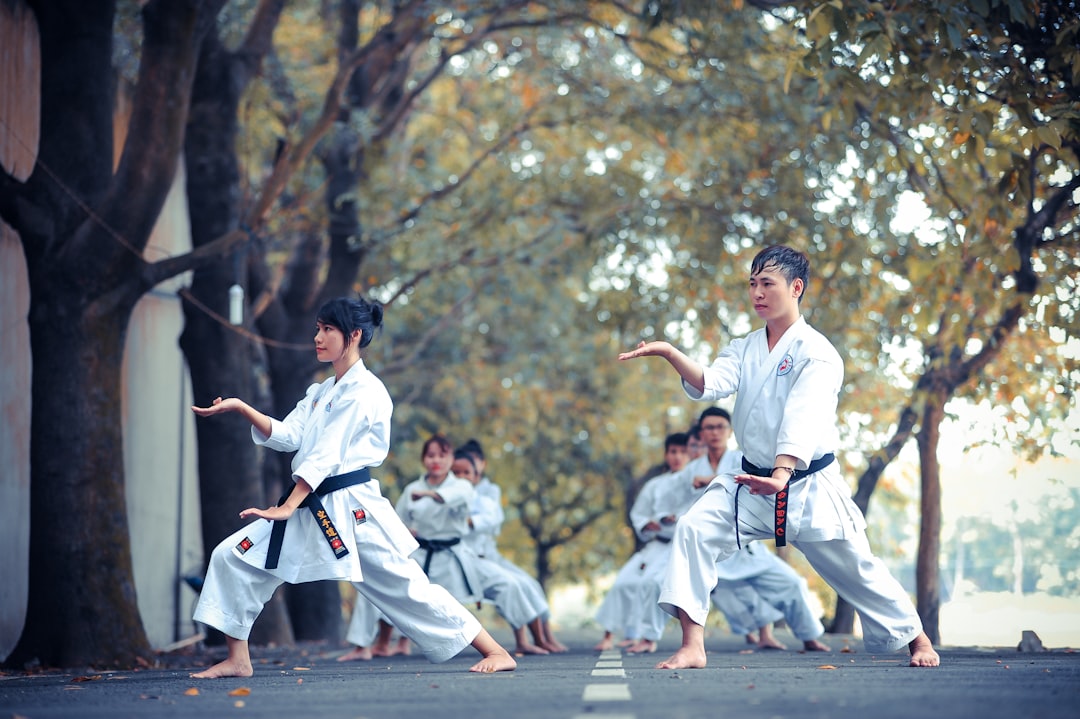Choosing the right protective gear for children practicing karate sparring is crucial for their safety and performance. This article outlines the essential features of suitable karate equipment, emphasizing headgears that fit well without hindering vision or movement, chest protectors that provide impact cushioning without restricting mobility, and correctly sized forearm, shin, and instep pads that offer comprehensive coverage while remaining lightweight. Gloves should safeguard hands without affecting grip or agility. When selecting gear, prioritize safety, comfort, and freedom of movement to optimize the child's training experience. This guide also includes precise measurement instructions for each piece of equipment, ensuring that karate equipment meets safety standards and supports young practitioners effectively during their sparring sessions.
When stepping into the world of kids’ karate sparring, safety and proper fit are paramount. This article serves as a comprehensive guide, equipping you with the knowledge to measure your child for the essential karate equipment needed. We’ll explore critical measurements that ensure your young athlete trains safely and effectively. From headgear to shin guards, each piece of protective gear must be tailored to their size. Dive into our step-by-step guide, designed to help you navigate through selecting the right karate sparring equipment for your child’s comfort and security during their martial arts journey.
- Essential Measurements for Children's Karate Sparring Gear: Ensuring Proper Fit and Safety
- Step-by-Step Guide to Measuring Kids' Karate Protective Equipment: Helping Them Train Safely and Effectively
Essential Measurements for Children's Karate Sparring Gear: Ensuring Proper Fit and Safety

When outfitting children for karate sparring, it’s crucial to focus on equipment that offers both safety and functionality. The right gear not only protects them during practice but also allows for optimal performance. Among the karate equipment needed, headgears are paramount; they should fit snugly without obstructing vision or hearing. Are the headgear’s size adjustable? Yes, it should be, as children grow rapidly and need room for their heads to accommodate this growth. Chest protectors are another essential piece, designed to cushion the body from impacts while remaining flexible for mobility. Do the chest protectors fit well without being too restrictive? They should be worn over the torso with a secure yet comfortable fit, allowing for full range of motion in the arms and upper body.
Protective gear for forearms, shins, and insteps is also essential, as these areas are frequently targeted during sparring. These pads should be measured to ensure they cover the appropriate length without hindering the wearer’s dexterity or balance. Is there adequate padding for the joints and vulnerable areas? The gear must provide full coverage while maintaining a lightweight feel, so the child can focus on technique rather than discomfort. Glove selection is equally important; they should offer hand protection without compromising grip or agility. Do the gloves fit correctly, providing a snug yet unobstructed fit for the hands? The right pair of gloves will have a good fit, allowing the child to practice punches and blocks with confidence and control. Remember, when measuring for children’s karate sparring gear, prioritize safety, comfort, and ease of movement to ensure a positive and safe experience in the dojo.
Step-by-Step Guide to Measuring Kids' Karate Protective Equipment: Helping Them Train Safely and Effectively

When outfitting your child for safe and effective karate sparring, it’s crucial to ensure that their protective equipment fits properly. Here’s a step-by-step guide to measuring kids’ karate gear to guarantee they train with the necessary protection. Firstly, begin by assessing the head size. Use a fabric tape measure to circle the child’s head just above the eyebrows and ears, ensuring a comfortable yet snug fit for the headgear. This measurement will help you select the correct size that won’t obstruct their vision or movement.
Next, move on to the torso protection. With the child standing, wrap the tape measure around the chest and across the shoulder blades at the back, making sure the end of the tape aligns with the starting point, forming a full circle. The chest protector should fit over the majority of their torso without being too tight or too loose, allowing for a full range of motion while providing ample coverage. For the arm protectors, measure from the center of the shoulder joint down to the wrist, keeping in mind that a bit of room is needed for ease of movement and flexibility during practice or sparring. With these measurements in hand, you’ll be equipped to select karate equipment that will not only meet the safety requirements but also enhance your child’s training experience.
Selecting the right karate equipment for children is paramount to their safety and effectiveness in sparring. This article has outlined essential measurements and provided a clear step-by-step guide to ensure that each piece of gear fits properly, aligning with the standards for kids’ karate protective equipment. By adhering to these guidelines, parents and instructors can safeguard young martial artists during practice and competition. Remember, the right fit not only promotes safety but also enhances performance, allowing children to focus on mastering their techniques and developing their skills. With the proper gear in place, kids can embark on their karate journey with confidence, knowing they have the support needed for a secure and rewarding experience.
